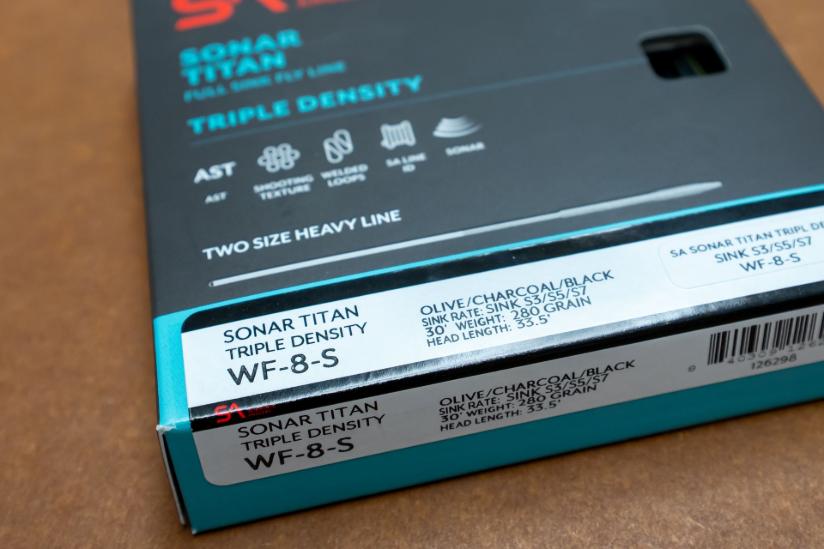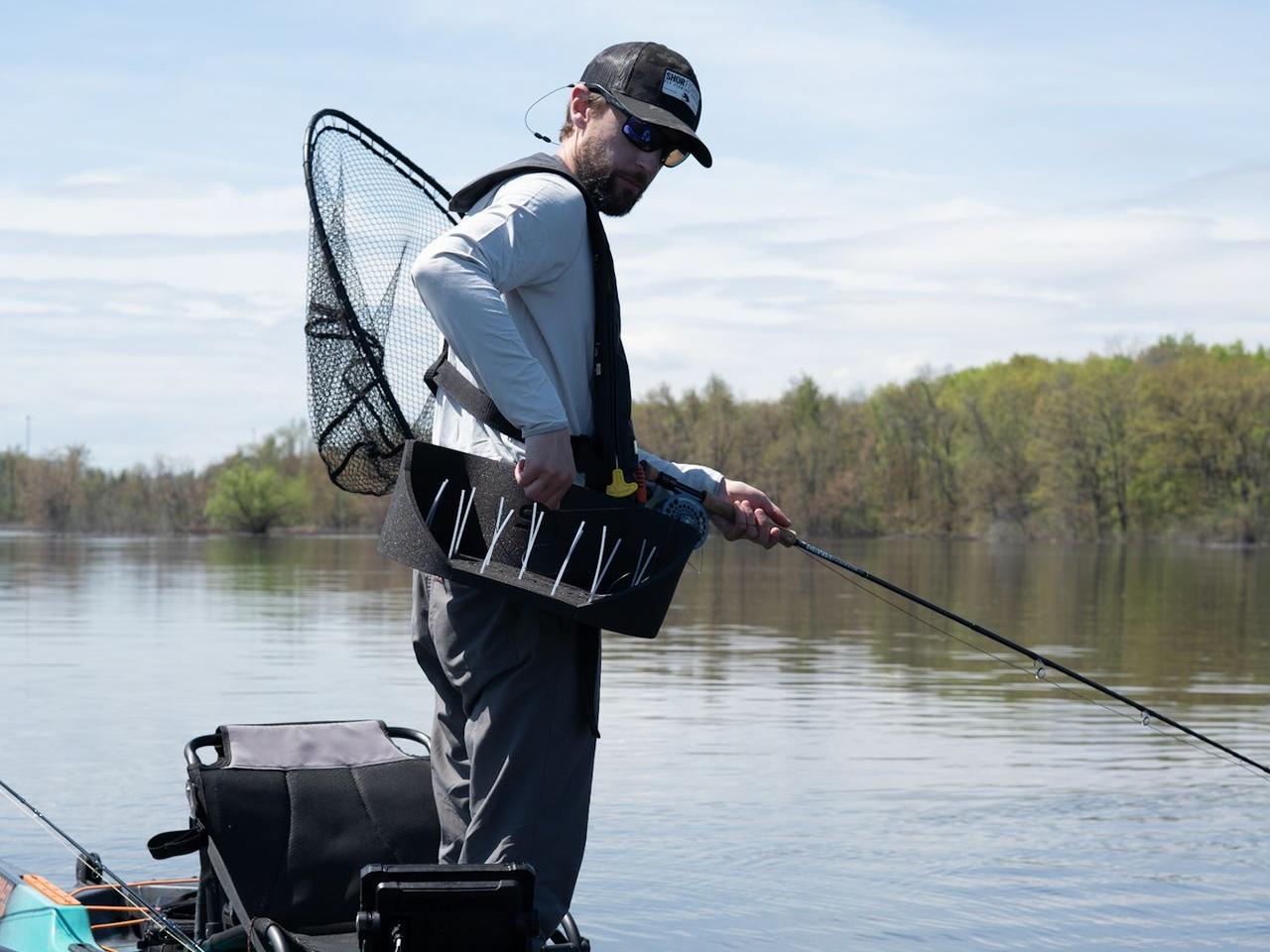By Raphaël Magnan
Fly fishing is often associated with the surface, but sinking lines offer many possibilities. Although the floating line is popular and easy to cast, it limits presentation options. Sinking lines, although they may seem intimidating, are very useful and deserve to be better known. I hope the following information will help you understand and use them effectively. Dare to explore the depths and discover a world of new possibilities.
Understanding Sinking Lines Better
To identify sinking lines, read the indications on the box provided by the manufacturers. Unlike floating lines, identified by the letter F (floating), sinking lines carry an S (sinking). For example, a sinking caliber 6 fly line will be indicated WF-6-S.

Sinking lines have variable sink speeds, classified by a number after the density letter. The higher the number, the faster the sink rate, measured in inches per second (IPS). For example, a sinking type 3 will be identified WF-6-S3.
Here is a summary table of models generally available on the market:
|
Density |
Descent Rate - inches/second |
|
Sink 1 |
1.75 |
|
Sink 2 |
2 |
|
Sink 3 |
3 |
|
Sink 4 |
4 |
|
Sink 5 |
5 |
|
Sink 6 |
6 |
|
Sink 7 |
7 |
Contrary to popular belief, companies do not make sinking lines heavier but denser, which must be greater than that of water. The higher the density, the faster the line sinks. Additionally, metallic materials like tungsten powder are often added to improve sinking performance.
In stores, you will discover various models of sinking lines. Some sink throughout their length, others have a few feet end that descends into the water. In recent years, lines with 2 to 3 different densities on the same line have appeared, allowing progressive descent for better fly presentation.
Orient Your Choice
It is now crucial to choose the line that best suits your needs. First, think about the purpose you want to use it for. For shallow river fishing, a sinking tip line is ideal. It is easy to cast and, by choosing the right sinking speed, you will avoid snagging the bottom. Opt for types 1 to 3 for depths up to 5 feet, and type 6 for depths over 10 feet. Note that the current significantly slows down the descent rate of your line by creating resistance. Replacing your floating line in spring or fall, when the water is colder and the fish are less inclined to attack on the surface, will be beneficial. Attach a 4 or 5-foot leader to your line, followed by a streamer to drift your imitation in the current.
When it comes to lake fishing, you have plenty of choice! All the lines mentioned earlier may be suitable. For trolling fishing, a fully sinking line will ensure your fly maintains a constant depth. Anglers of lake trout or fish that stay very deep will be delighted to learn that there are lines that easily reach depths of 20 to 30 feet. If you prefer more dynamic fishing with frequent casts, opt for a sinking tip or multi-density line.
The frequent question about sinking lines concerns their depth according to their descent rate. The answer depends on many factors such as water temperature, retrieval speed, or current, even in lakes. Therefore, an exact answer is difficult. Your best reference is the manufacturer's indicated inches/second.
The counting method is also useful for estimating the depth of your line. Count the seconds after the line touches the water without retrieving it, then multiply this time by the sinking rate in inches.
The Instructor's Tips
Now that you have chosen your line, it's time to make your first experiences. Here are some tips to avoid frustrations that could discourage you and make you return to your good old floating line.
The Leader
Using the same leader length as on a floating line can cause the fly to rise to the surface. A short leader (4 or 5 feet) is preferable to avoid unwanted arcs and to maintain the desired depth. Fluorocarbon is recommended for its sinking properties and invisibility.
Rod Position
Keep the tip of your rod close to the surface of the water to improve bite detection. A high rod creates a loss of tension, preventing you from feeling the fish.

The Stripping Basket
Using a stripping basket protects the line from dirt and prevents tangles in the boat. Wading, the basket prevents the line from descending into the water, facilitating the next cast.
In conclusion, mastering the sinking line requires understanding the factors influencing its depth as well as adapted techniques. By following the tips regarding the leader, rod position, and use of a stripping basket, anglers can optimize their experience and increase their chances of success. Experimentation and observation will remain your best allies to perfect your approach to fishing with a sinking line.

